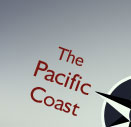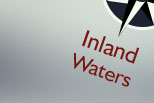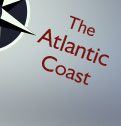



| Home > Browse Selected Topics | Franšais | |
This archived Web page remains online for reference, research or recordkeeping purposes. This page will not be altered or updated. Web pages that are archived on the Internet are not subject to the Government of Canada Web Standards. As per the Communications Policy of the Government of Canada, you can request alternate formats of this page on the Contact Us page.
Investigate!The history of Canada can be appreciated in many ways, and illuminated through many forms of archival records. Library and Archives Canada holds a collection of approximately 25 million photographs dating from the early 1840s up to the present. Created from the point of view of government and private sources, these photographs document a wide range of subject matter in Canadian history and society, including portraiture; political, military, social and cultural events; groups and communities; and urban and rural landscapes. Canada's maritime heritage is represented among these photographs, offering a valuable resource for shipwreck researchers and a distinctive addition to textual and cartographic records. Only a very small number of the photographic holdings at Library and Archives Canada have been described individually. There are approximately 6 to 8 million individual descriptions in various finding aids available to researchers, as well as about 300,000 records in card catalogues. These resources can be consulted in the Reference Services Division. Library and Archives Canada's online photography database contains almost 400,000 descriptions of photographs, and provides access to some 36,000 digitized images. When researching photographs at Library and Archives Canada, researchers need to be aware that there is no single list or index to all of the photographic records pertaining to shipwrecks in Canadian waters. Often it is helpful to understand the provenance of the photographs, such as the history of a federal department or the individual who initially had custody of the image, before attempting to track down an individual record. For example, the Department of Marine was created in 1868, but was merged with the Department of Transport in 1936; accordingly, the process for investigating, photographing and documenting shipwrecks evolved. Photographs from the Marine Casualty Investigations and the Wreck Commissioner investigation files from the Department of Transport and the Department of Marine were often an important part of the court proceedings undertaken for each shipwreck, as they were treated as exhibits in their own right. Where photographs exist, they may depict the site of the shipwreck, views of the ship before and after the wreck, as well as detailed shots of any damage. Many of the photographs, as well as other graphic records, such as sketches, maps and blueprints, were removed from the textual records in the late 1960s and early 1970s, so that they could be stored in more appropriate conservation conditions.
To learn more about the photographic holdings of Library and Archives Canada, or to start your investigation, visit: www.collectionscanada.gc.ca/archivianet/020115_e.html. |